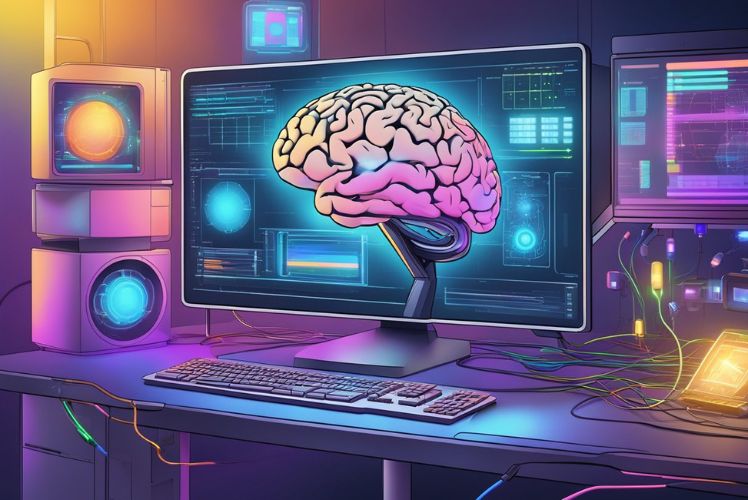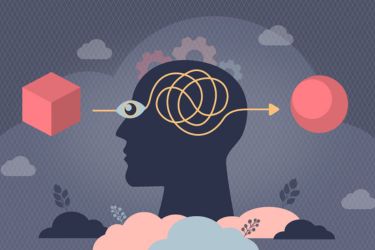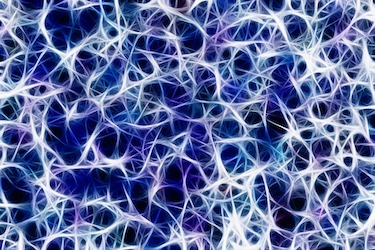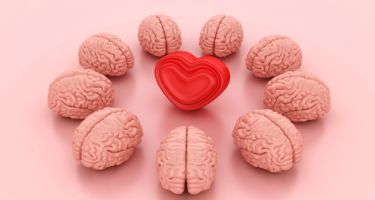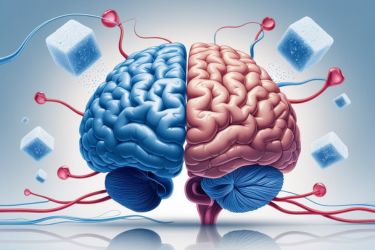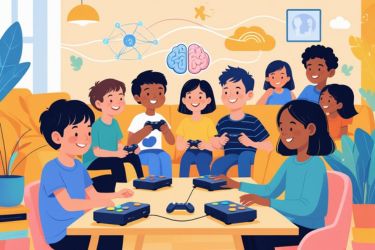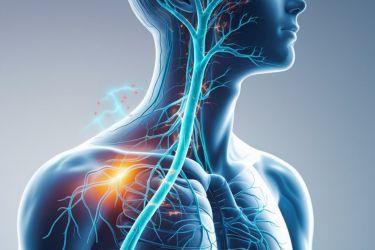Neurohacking is an exciting field that combines neuroscience and technology to enhance our cognitive abilities. By using programming languages like R, we can analyse neuroimaging data and develop strategies for cognitive enhancement. This growing area of study not only opens doors for personal improvement but also offers insights into how our brains work and how we can optimise their function.

As we delve deeper into neurohacking, we will explore safe techniques for brain enhancement and the tools needed for data analysis. Understanding neuroanatomy and imaging techniques is crucial in this journey, allowing us to make informed choices about our cognitive health. We also need to be aware of the ethical considerations and potential risks involved, ensuring a balanced approach toward improving our mental capabilities.
In this blog post, we aim to guide you through the fundamentals of neurohacking and provide you with the knowledge to apply these techniques effectively. As we navigate this complex topic, we will share valuable insights that can empower us in our pursuit of cognitive greatness.
Key Takeaways
- We can use programming tools to analyse brain data effectively.
- Understanding brain structure helps us enhance cognitive function.
- Ethical considerations are essential for safe neurohacking practices.
Fundamentals of Neurohacking

Neurohacking is an innovative field that merges neuroscience and technology to enhance brain function. Understanding its core principles is essential for anyone interested in neuroimaging and data analysis.
Understanding Neurohacking
Neurohacking involves the use of advanced tools and methods to manipulate brain data. We focus on using the R programming language to analyse and process neuroimaging data. This data can include MRI scans, which are vital for visualising brain structures.
Through neurohacking, we learn to perform tasks such as data visualisation, processing inhomogeneity correction, and statistical analysis. These skills enable us to extract meaningful insights from complex neuroimaging datasets, which helps in understanding brain activity and structure better.
History and Evolution of Neurohacking
The concept of neurohacking has evolved significantly over the years. Initially, it began with basic image processing techniques used in neuroscience. As technology advanced, so did the methods.
In the early days, neuroimaging was a labour-intensive process. Today, we benefit from sophisticated software tools and programming languages like R. These tools facilitate easier manipulation of large datasets, allowing us to explore brain function in great detail.
Recognising the historical context helps us appreciate the advancements in neurohacking. Its growth reflects ongoing changes in both technology and our understanding of the brain, paving the way for future research and applications.
Neuroanatomy and Function

In this section, we explore key components of neuroanatomy and how they relate to brain function. We will examine specific brain regions and the role neurotransmitters play in communication, as well as the significance of neuronal networks and brain connectivity.
Brain Regions and Neurotransmitters
The brain is composed of various regions, each responsible for different functions. Some of the major regions include the frontal lobe, responsible for decision-making; the temporal lobe, involved in memory; and the occipital lobe, focused on vision.
Neurotransmitters are chemical messengers that transmit signals across synapses. Key neurotransmitters include:
- Dopamine: Associated with pleasure and reward.
- Serotonin: Regulates mood and anxiety.
- GABA: Functions as the primary inhibitory neurotransmitter.
- Glutamate: The main excitatory neurotransmitter, important for learning.
These substances play a crucial role in brain function and influence our behaviour and mood.
Neuronal Networks and Brain Connectivity
Neuronal networks refer to interconnected groups of neurons that communicate with each other. These networks allow for the integration of information across different brain areas.
Brain connectivity can be classified into:
- Short-range connections: Link nearby neurons for quick communication.
- Long-range connections: Connect distant brain areas, enabling complex thought processes.
The strength and efficiency of these networks determine how effectively we process information. Disruptions in connectivity may lead to cognitive issues and mental disorders, emphasising the importance of studying these networks.
Neuroimaging Techniques

In neurohacking, understanding neuroimaging techniques is essential. We use these tools to explore brain structures and functions. This section highlights important aspects of MRI and advancements in acquiring neuroimages.
MRI and Its Role in Neurohacking
Magnetic Resonance Imaging (MRI) has dramatically transformed how we study the brain. We can examine detailed images of brain structures without using radiation. MRI is crucial for identifying anatomical variations and assessing brain health.
Through MRI, we achieve two main goals:
- Structural Imaging: We can visualise brain anatomy and detect abnormalities.
- Functional Imaging: Techniques like fMRI allow us to observe brain activity in real-time during various tasks.
By analysing MRI data, we can better understand neurodevelopmental disorders and cognitive functions, making it indispensable in neurohacking.
Advancements in Neuroimage Acquisition
Recent advancements in neuroimage acquisition have improved the accuracy and speed of data collection. Techniques are now quicker and allow us to capture high-resolution images. We utilise innovations such as:
- Multi-band Imaging: This allows us to acquire multiple slices of brain images simultaneously, reducing scan time.
- High-Field MRI: Operating at higher magnetic fields enhances image clarity and resolution.
These advancements empower us to explore complex neural pathways and understand brain connectivity better. With improved neuroimaging, we can unlock new insights into brain functions and disorders.
Cognitive Enhancement Strategies

Cognitive enhancement involves various methods and approaches aimed at improving our mental functions. By focusing on specific strategies, we can better understand how to optimise our cognitive abilities effectively.
Methods and Approaches for Cognitive Enhancement
There are several effective methods for cognitive enhancement. These can include both lifestyle changes and tools we can use:
-
Diet and Nutrition: Consuming a balanced diet rich in omega-3 fatty acids, antioxidants, and vitamins can support brain health. Foods like fish, nuts, and berries are excellent choices.
-
Physical Exercise: Regular physical activity has been shown to improve cognitive function. Exercise increases blood flow to the brain, which can enhance memory and processing speed.
-
Sleep Quality: Good sleep is crucial for cognitive performance. Prioritising 7-9 hours of quality sleep gives our brains time to rest and recover.
-
Cognitive Training: Engaging in brain games or puzzles can help sharpen our mental skills. These activities can improve our problem-solving abilities and memory retention.
Assessing Effectiveness and Benefits
To understand the impact of cognitive enhancement strategies, we must assess their effectiveness. Some clear indicators include:
-
Memory Improvement: Enhanced memory recall can serve as a direct measure of success. We can track our progress by noting improvements in remembering information.
-
Concentration and Focus: Noticing increased focus during tasks is another sign. If we find it easier to concentrate, this boost likely suggests effective enhancement strategies.
-
Feedback from Neurohacking: Participating in neurohacking communities can provide insights into various methods used by others, helping us refine our approaches.
By recognising these markers, we can evaluate what works best for us and continue to build our cognitive abilities over time.
Risks and Ethical Considerations
As we explore neurohacking, it's crucial to understand the risks and ethical considerations that come into play. Neurohacking can lead to various side effects, and the ethical implications of enhancing cognitive abilities require careful thought.
The Potential Side Effects of Neurohacking
Neurohacking methods can produce a range of side effects that we must consider. These may include:
- Headaches: A common reaction to certain neurostimulation techniques.
- Mood changes: Users might experience anxiety or irritability after interventions.
- Cognitive disruptions: Some methods could impair concentration or memory instead of enhancing them.
- Dependence: Regular use of certain neurohacking tools might lead to reliance on them for daily functioning.
It is essential for us to monitor our experiences closely when engaging in neurohacking. Understanding these side effects can help us make informed decisions about which techniques to use. With awareness, we can mitigate risks and avoid potential harm.
Ethical Implications in Cognitive Enhancement
The ethical implications of neurohacking are complex. We must address questions such as:
- Informed consent: Are users fully aware of what they are engaging in and its possible impacts?
- Equity: Ensuring that cognitive enhancement methods are accessible to everyone and not just a privileged few is vital.
- Long-term effects: We should consider how enhancement affects personality, behaviour, and societal norms.
These factors place the responsibility on us to scrutinise the use of neurohacking. By doing so, we can promote practices that are safe and ethically sound. Balancing benefits with moral considerations is paramount as we navigate this emerging field.
Data Formats and Processing
In neuroimaging, understanding data formats and the steps for processing is crucial. NIfTI format is widely used for storing brain imaging data. We also need effective methods for preprocessing this data to prepare it for analysis.
Understanding NIfTI Format
NIfTI, or Neuroimaging Informatics Technology Initiative, is a file format for storing neuroimaging data. It helps us organise and manage three-dimensional brain scans efficiently.
Key features of NIfTI include:
- File types: NIfTI files typically have the extensions .nii or .nii.gz.
- Data storage: NIfTI files can store both 3D and 4D data, along with header information.
- Simplicity: This format allows for easy handling of imaging data across different software platforms, making it versatile for researchers.
We often use NIfTI to store MRI sweeps, functional data, and diffusion-weighted images, enabling us to work seamlessly with various analyses.
Data Preprocessing and Analysis
Data preprocessing is vital before we analyse neuroimaging data. It involves several steps to ensure the data is clean and usable.
Common preprocessing techniques include:
- Motion correction: Adjusting data to account for movement during scans.
- Inhomogeneity correction: Fixing intensity inconsistencies in images.
- Smoothing: Reducing noise and enhancing signal for clearer results.
After preprocessing, we typically move on to specific analyses such as statistical testing or visualisation. Proper preprocessing maximises the reliability of our results, allowing us to draw meaningful conclusions. In our work, we prioritise careful data handling to ensure robust findings.
Community and Support
In the realm of neurohacking, community and support play crucial roles in enhancing knowledge and fostering innovation. We can utilise networking opportunities and educational resources to optimise our understanding and skills.
Networking and Collaborative Research
Networking is vital for anyone involved in neurohacking. Engaging with others in the field opens doors to collaboration and joint research opportunities.
We can connect through various platforms, such as:
- Online forums: Many dedicated platforms allow us to share insights and ask questions.
- Social media groups: Participating in groups on platforms like LinkedIn or Facebook can enhance our reach.
Moreover, attending conferences and workshops helps us meet experts and peers. These events encourage the exchange of ideas and can lead to valuable partnerships in research.
Collaborative research can be particularly beneficial. Working with others allows us to tackle complex problems and draw from diverse expertise. By sharing data and findings, we can accelerate our projects.
Support Resources and Educational Materials
Access to support resources and educational materials is essential for our development in neurohacking. Several platforms provide valuable learning tools to enhance our skills.
We can explore courses like Introduction to Neurohacking in R offered on Coursera. These resources cover data manipulation and analysis techniques tailored specifically for neuroimaging.
Additionally, we can refer to websites such as the Neurohacking School for a one-stop training solution. They offer community support along with educational materials for practical applications.
Utilising blogs, webinars, and research papers further enriches our learning experience. Seeking out these supportive resources allows us to remain informed and inspired in our neurohacking journeys.
Frequently Asked Questions
In this section, we address common questions about neurohacking. These questions range from the techniques we can use to improve cognitive functions to recommended resources for beginners in the field.
What are the primary techniques used in neurohacking?
Neurohacking involves various techniques, including neurofeedback, cognitive training, and the use of brainwave manipulation tools. We can also apply methods like transcranial magnetic stimulation (TMS) and even psychotropic substances to alter brain function and enhance mental performance.
How can neurohacking improve cognitive functions?
We use neurohacking to enhance cognitive functions such as attention, memory, and problem-solving. Techniques like cognitive training and neurofeedback can lead to measurable improvements in these areas by optimising brain performance through tailored exercises and real-time feedback.
What introductory books are recommended for learning about neurohacking?
For those starting out, we recommend books like "The Neurohacker's Handbook" and "Brain Hacking" that provide foundational knowledge. These resources often cover key concepts and practical tips to apply neurohacking principles effectively.
Which fundamental neuroscience concepts are essential for understanding neuroimaging?
To grasp neuroimaging, we should understand basic neuroscience concepts like brain anatomy, neural signalling, and the various imaging techniques used. Familiarity with concepts such as functional MRI (fMRI) and electroencephalography (EEG) is also crucial for diving deeper into the subject.
Are there any free online courses for beginners in neuroscience?
Yes, there are several free online courses available for beginners in neuroscience. Platforms like Coursera and edX offer introductory courses that cover essential topics, making it easier for us to get started in this exciting field.
What does an introductory MRI course typically cover?
An introductory MRI course usually includes the principles of magnetic resonance, the MRI scanning process, and how to interpret MRI images. We can also expect to learn about the equipment used and the safety protocols associated with MRI procedures.

